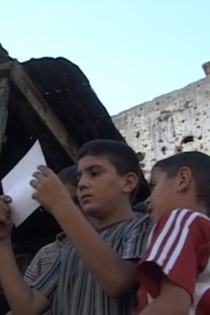
Lamia Joreige
2021Replay (Bis)
Lamia Joreige
Photographs from: FAI (Arab Image Foundation) – Anouchian / Collection M. Yammine. and Joreige family, and La guerre du Liban (Images et chronologies), published by Dar Al-Massira, Beirut – 1978 The starting point of Replay (bis) is the idea of rupture in a time and place that are undefined. The story, which might have been a real experience or might have been a dream, is repeated in various forms. The images appear as reminiscences of the past, as well as attempts to reconstruct a narrative. These attempts make room for one final long shot: A view of Beirut today, at the time of the dusk prayer. It is as if this last image – inducing contemplation, had become my ultimate way of relating the story.
Replay (Bis)

Beirut 1001 Views
Lamia Joreige
The multimedia installation Beirut Autopsy of a City proposes possible reconciliations between the task of the archaeologist and that of the poet, between modern images and ancient texts. In the middle of tales of conquest and defeat that shaped (and disfigured) Beirut, one wanders amidst narratives that point out to the impossibility of constructing a grand history. The second chapter ‘Beirut, 1001 Views’ is a large projection of a wide view of the harbor. Based on photographs from: The Arab Image Foundation, The Fouad Debbas Collection & An Nahar Documentation Center – Beirut. Effects: Sandra Fatté (Djinn House)
Beirut 1001 Views
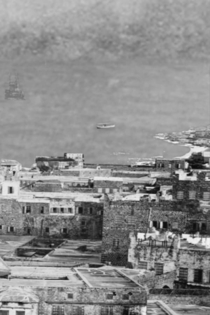
Objects of War
Lamia Joreige
Zeina Arida, Lina Saneh
‘Objects of War’ is a series of testimonials on the Lebanese war. Each person chooses an object, ordinary or unusual, which serves as a starting point for his / her story. These testimonials while helping to create a collective memory, also show the impossibility of telling a single History of this war. Only fragments of this History are recounted here, held as truth by those expressing them. In ‘Objects of War’, the aim is not to reveal a truth but rather to gather and confront many diverse versions and discourses on the subject. ‘Objects of War’ started in 1999 assembling the testimonials of eleven persons. It was first shown in 2000 . It continued in 2003 with ‘Objects of War n°2’, recording seven additional testimonials. This time however, and since then, the recorded material is left unedited, shown in its integrity. The work of collecting and assembling these stories continued with ‘Objects of War n°3 & n°4’ in 2006 and ‘n°5 & 6’ in 2014.
Objects of War
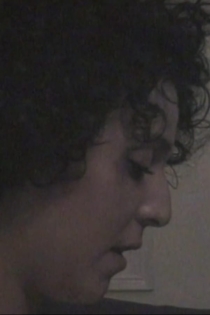
Sleep
Lamia Joreige
The film ‘Sleep’, which is part of ‘Time and the Other’ (exhibition and book), is a succession of photograms (taken with the help of a camera with a programmed intervalometer), each of them a fragment of actual sleeping time. This sequence repeats itself expanding at each replay and transforming its content as well as the rhythm of its images every time. The bodies in motion of the couple become abstract, blurring the border with reality. ‘Sleep’ is the place of total separation, a unique moment of solitude to which the other has no access. In this video, sounds and images are worked to create a kind of lyricism haunted by anxiety, and to express the swing between discord and harmony that lies in the relationship to the loved other. ‘Time and the Other’ is the story of love and separation of a couple, viewed from the subjective angle of one of the lovers. That experience is expressed in the absence of the other. It includes 3 chapters: Embrace, Sleep & Lost Chords.
Sleep
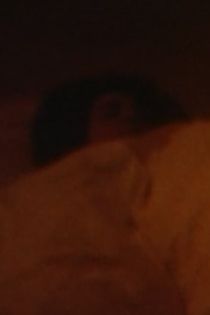
Embrace
Lamia Joreige
Rania Rafei, Ghassan Salhab
The video ‘Embrace’, which is part of ‘Time and the Other’ (exhibition and book), is a single shot of a couple in an urban landscape. As the camera gets closer, the shot becomes more and more abstract. The concept of ‘Embrace’ is based on the ambiguity and violence projected onto any act, at that singular instant when the real and the non-real are indiscernible. In this short video, we are never sure whether the couple is fighting or embracing. ‘Time and the Other’ is the story of love and separation of a couple, viewed from the subjective angle of one of the lovers. That experience is expressed in the absence of the other. It includes 3 chapters: Embrace, Sleep & Lost Chords.
Embrace
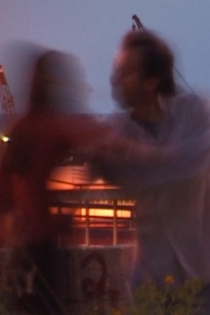
Nights and Days
Lamia Joreige
‘Nights and Days’ uses notes written and filmed during summer 2006 as a personal account of the experience of war. The first part, which resembles yet is not a diary of war, oscillates between day-shots and night-shots and features a soundtrack expressing the idea of time passing, awaiting, interrogations and fears experienced in such an unusual time. The second part is a journey to south Lebanon which was devastated during that war. It alternates between peaceful landscapes and ruins and destruction accompanied only by music, as no words could express this devastation. ‘Nights and Days’ questions the relation between image and sound and reflects on notions of ‘beauty’ and ‘horror through images of urban and natural landscapes, where sometimes a detail betrays the presence of war and its violence.
Nights and Days
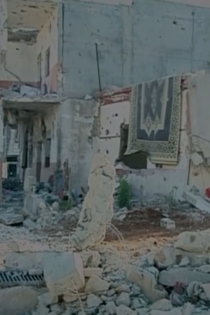
Full Moon
Lamia Joreige
The video ‘Full moon’ present a few attempts over years to capture a poetic moment which happened once: a traveling with an extraordinary full moon while driving to Raouché crossing ‘the Ring’, then back home. The same traveling is repeated, each time in a different way. The recordings, each of which is diagnosis of our ‘present’ in Beirut, constitute as many fragments of history. Is it possible to capture an instant? Aren’t we always beneath or beyond reality? Here, repetition becomes the reflection of a vain desire to capture beauty and at the same time a means of renewal. It reflects on the process of creation.
Full Moon
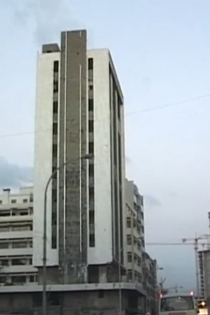
Houna wa roubbama hounak
Lamia Joreige
During the Lebanese civil war, thousands of people disappeared. In most cases, the bodies were not found and the circumstances of their disappearance never known. Today, I travel through Beirut, asking the inhabitants I encounter, one same question: Do you know anyone who was kidnapped here during the war? My investigation carries me through the many districts around the "Green line", which used to divide Beirut between East and West, and where militias set up their checkpoints, the scenes of many kidnappings, and crimes. I thereby attempt to trigger the process of memory and to reveal the multiplicity of existing discourses on the war and the immensity of the drama. As I cross town and discover places laden with history, I draw a personal map of this city.
Here and Perhaps Elsewhere
